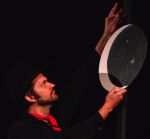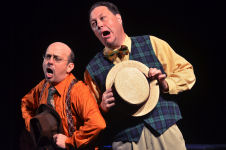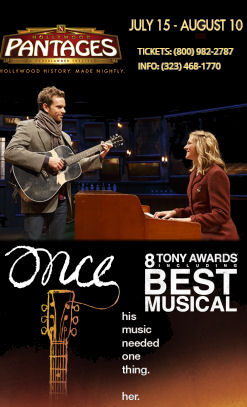
 “It’s everything that “Ghost” wasn’t”. This is what I turned and whispered to my wife about 15 minutes into “Once“, the musical we saw yesterday afternoon at the Pantages theatre in Hollywood. Perhaps I should elaborate:
“It’s everything that “Ghost” wasn’t”. This is what I turned and whispered to my wife about 15 minutes into “Once“, the musical we saw yesterday afternoon at the Pantages theatre in Hollywood. Perhaps I should elaborate:
- “Ghost” attempted to put a movie on stage; “Once” treated the stage with respect, allowing the audience to create with their imagination, and recognizing it was on stage.
- “Ghost” was electric rock, electric images; “Once” was acoustic simplicity.
- “Ghost” was theatrical complexity; “Once” could be staged in any theatre, including those without fancy electronics or fly space.
- “Ghost” was fancy dancing and ensembles without meaning; “Once” was deep meaning and emotion, without fancy dancing.
- “Ghost” was an example of how not to transfer a movie to the stage–it was forced. “Once“, for lack of a better term, was organic. There was no need for the movie (indeed, one review I saw noted that the stage version was better than the movie).
- “Ghost” was based on fantasy; “Once” was grounded in reality.
- “Ghost” left me blah; I fell in love with “Once“.
One digression before I go on — please note the graphic I used for “Once” (if you are reading this someplace where you don’t see the links and graphics, go to blog.cahighways.org and read the original). I had to create this one — every graphic you typically see shows the New York original cast with Cristin Milioti and Steve Kazee (FB). The touring cast was so good I wanted you to see their faces, so I had to hunt down an image showing Stuart Ward and Dani de Waal. End digression.
I’ll also note going in that I haven’t seen the movie upon which this production was based. I believe that if you have to see the original movie, there’s something wrong with the stage production. Luckily, “Once” stands well on its own (although I”ll note it is about double the length of the movie). The movie was written (and directed) by John Carney; the “stage play” adaptation (e.g., the book for the stage version) was by Enda Walsh. As for the music and lyrics — they are mostly from the movie, and were written by the two leads of the movie: Glen Hansard (FB) and Markéta Irglová (FB). Both Hansard and Irglová are accomplished musicians and have written for the screen; neither has written for the stage. This, actually, works to their advantage: the music in “Once” doesn’t sound like your typical musical music. If anything, it reminded me a bit of “Robber Bridgegroom” for its feel and integration. It worked well.
“Once” signals that it is different from the moment you walk into the theatre. Most shows — you go in, you sit down, the lights dim, the overture starts (if you’re lucky enough to be at a show with an overture), and the story begins. With “Once“, when you walk in the theatre, the first thing you see is people on stage. “Once” takes place in a bar in Dublin, and the stage has been turned into a working bar. If you’re over 21, you can go on stage (bring cash), buy a drink (must be consumed on stage), and experience the bar. Slowly the majority of the cast comes out with their instruments (most cast members play multiple instruments) and an Irish folk music jam session begins. The house lights are up, audience is on stage, and here is the cast just having fun with Irish songs like “On Raglan Road.” It would be lovely to have had an album of that jam session; the music was as good as any concert I’ve heard at McCabes. Slowly the audience filters off stage, and the musicians entice one of the guitar players to play his song. He does — a touching song called “Love”. By this point, the house lights are down, except for one illuminating a girl walking down the aisle onto the stage, listening to the music. She’s onstage by the time she finishes… and the story begins.
“Once” tells the story of an unnamed man (“Guy”) and an unnamed women (“Girl”). The story begins as the guy finishes his song, intending to leave his guitar and his music behind in the bar. The girl, an Czech immigrant, was touched by the song. She asks a number of questions, learning he wrote the song for a girl who recently left him to move to New York. The music and the memories are too painful, so he is giving them up and going back to work in his father’s vacuum shop. Suddenly, the girl has a vacuum to be repaired, and offers to pay him with music. Thus begins a quest from the girl to get the guy back with the ex-girlfriend (while the guy is slowly falling in love with the girl). This includes her introducing the guy to her “family”: her mother, her daughter, and some other Czech immigrant musicians sharing a Dublin apartment. She also arranges a 24 hour recording session so the guy can record his music, travel to New York, get a music contract, and win back his ex-girlfriend. This includes arranging a bank loan (with a banker who is also a musician), and getting the guy comfortable on-stage by having him sing at an “open mic” night. This is when you see that guy is falling for girl. Subsequent scenes deepen that realization — that guy is falling for girl, and that slowly, girl is falling for guy. The guy asks the girl to go to New York with him when he goes. She demurs, as her husband is attempting to reconcile. As the story ends, the guy is heading off to New York to see his ex-, who is willing to give it another try; the girl remains in Dublin, but has the gift of a piano from the guy, who bought it with the money his father gave him to get settled in New York. (Note: You can read a longer synopsis on the wikipedia page)
What’s interesting here is the staging: although there are a number of different locations, almost everything takes place in the bar. Tables are moved together, chairs come in an out, but everything else is … imagination. Even most of the other cast members remain on stage when not their characters; they are on the side as the musicians. This is theatre as it should be (and what the recent monologue night at REP reminded us); actors creating the magic with their performance, not electronics or stagecraft. Some interstitial music starts to be played by the actors, people are moving around, and boom — suddenly — you’re somewhere else. The transformation is amazing to watch. Kudos to the director, John Tiffany (FB), for staying true to the simplicity of the story; and to the “movement” director, Steven Hoggett (FB), for not bringing in traditional dance and choreography. What movement there is seems appropriate — no dance numbers, but rhythmic movements of a folk nature that go with the music. The movement and staging are such that they just seem part of the story, as opposed to stopping the action for a superfluous dance number. As I said, the opposite of “Ghost“.
If I had any criticism of the show, it is that it really doesn’t belong where it is. It works OK in large theatre, but this musical is perfectly suited to the mid-size and small theatres. This would be spectacular at the Colony or Rep East.
The performers are spectacular, which is why I endeavored to find an image showing them. In the lead positions, of course, are “guy” and “girl”. The guy is played by Stuart Ward (FB, TW) (guitar), who plays beautifully, sings beautifully, and conveys a great depth of emotion in his performance. The girl is played by Dani de Waal (FB, TW) (piano). A wonderful musician with a lovely voice, she gives a delightfully quirky performance with her accent and playfulness. The two are believable together, harmonize well together, and just mesh. I’ll note that Ward has an EP out with about 2/3rds of the touring production; it’s quite good.
The remainder of the cast, although they have characters, are more in the background and notable for their wonderful instruments and musicality. The more memorable characters include Billy, the owner of the music store where the girl occasionally plays piano (and who has a crush on the girl); the Bank Manager who doubles as a guitar/cello player; Réza, another Czech immigrant who attempts to seduce Billy, and Ivanka, the girl’s daughter. Before I list the players, I just want to highlight Kolette Tetlow (FB) who played Ivanka: her scenes were few and she played no instrument, but her girlish playfulness still shone through. The cast/musicians were: Raymond Bokhour (FB) (Da, mandolin); Matt DeAngelis (FB) (Švec, guitar, mandolin, banjo, drums, percussion); John Steven Gardner (FB, TW) (Eamon, piano, guitar, percussion, melodica, harmonica, music captain); Donna Garner (FB) (Baruška, accordion, concertina); Evan Harrington (FB) (Billy, guitar, percussion, ukulele); Matt Wolpe (FB) (Emcee, guitar, banjo); Benjamin Magnuson (bank manager, cello, guitar); Alex Nee (FB, TW) (Andrej, electric bass, ukulele, guitar, percussion); Erica Swindell (FB, TW) (Ex-Girlfriend, violin, percussion, dance captain); and Claire Wellin (FB, TW) (Réza, violin). I’d love to see these folks put out an album of Irish music — they were that good.
Also part of the cast, but not on stage at our performance, were Ryan Link (TW) (Emcee, guitar, banjo — except Jul 18-24); Zander Meisner (FB) (Andrej, electric bass, ukulele, guitar, percussion – August 5-10); Estelle Bajou (FB) (u/s Réza, u/s Ex-girlfriend, violin); Stephen McIntyre (FB) (u/s Da, u/s bank manager, u/s Billy, mandolin, cello, guitar, ukulele, percussion); Tiffany Topol (FB, TW) (u/s Girl, piano); Tina Stafford (FB) (u/s Baruška, accordion, concertina).
As I noted, the technical side was brilliant. The scenic and costume design of Bob Crowley worked well — the bar looked like (and apparently was) a working Dublin bar, and the costumes were appropriately folkish. In many cases, they didn’t appear to be costumes at all — these folks looked like musicians. Lighting was by Natasha Katz (FB) and was suitably non-obtrusive. The sound was by Clive Goodwin (FB) and was generally clear, although the generally horrible acoustics of the Pantages tended to muffle the lyrics. Stephen Gabis was the dialect coach, and Liz Caplan Vocal Studios (FB) provided vocal supervision. Rounding out the technical side: Jim Carnahan (Casting), Shaun Peknic (FB) (Associate Director), Yasmine Lee/FB (Associate Movement Director), Jason DeBord (FB) (Resident Music Supervisor), Frank McCullough (Associate Scenic Designer), Peter Hoerburger (Associate Lighting Designer), Alex Hawthorn (Associate Sound Designer), Aurora Productions (Production Management), Daniel S. Rosokoff (Production Stage Manager), E. Cameron Holsinger (FB) (Stage Manager), Aaron Elgart (FB, TW) (Assistant Stage Manager), Chris Danner (Company Manager), and Candace Hemphill (FB) (Assistant Company Manager).
“Once” continues at the Pantages Theatre through August 10. Tickets are available through the Pantages Box Office online, although you can avoid service fees and go to the box office directly. Some dates are available through Goldstar.
[Ob. Disclaimer: I am not a trained theatre critic; I am, however, a regular theatre audience. I’ve been attending live theatre in Los Angeles since 1972; I’ve been writing up my thoughts on theatre (and the shows I see) since 2004. I do not have theatre training (I’m a computer security specialist), but have learned a lot about theatre over my many years of attending theatre and talking to talented professionals. I pay for all my tickets unless otherwise noted. I believe in telling you about the shows I see to help you form your opinion; it is up to you to determine the weight you give my writeups.]
Upcoming Theatre and Concerts: Next weekend brings two shows: “Bye Bye Birdie” at Cabrillo Music Theatre (FB) on 7/26, followed by the annual Operaworks improv show on 7/27. August starts with “Family Planning” at The Colony Theatre (FB) on 8/2. This is followed by “Buyer and Cellar” at the Mark Taper Forum on 8/9, and “Broadway Bound” at the Odyssey on 8/16 (directed by Jason Alexander). The following weekend we’ll be in Escondido, where there are a number of potential productions… including “Two Gentlemen of Verona” at the Old Globe, and “Pageant” at the Cygnet in Old Town. What they have at the Welk (“Oklahoma“), Patio Theatre (“Fiddler on the Roof“), and Moonlight Stage (“My Fair Lady“) are all retreads. August will end with the aforementioned “An Adult Evening of Shel Silverstein” at REP East (FB). I’m just starting to fill out September and October — so far, the plans include “The Great Gatsby” at Repertory East (FB), “What I Learned in Paris” at The Colony Theatre (FB), and “Pippin” at the Pantages (FB). November is also shaping up, with dates held for “Big Fish” at Musical Theatre West (FB), “Handle with Care” at The Colony Theatre (FB), the Nottingham Festival, “Sherlock Holmes and the Suicide Club” at REP East (FB), “Kinky Boots” at the Pantages (FB), and “She Loves Me” at Chance Theatre (FB) in Anaheim. As always, I’m keeping my eyes open for interesting productions mentioned on sites such as Bitter-Lemons, and Musicals in LA, as well as productions I see on Goldstar, LA Stage Tix, Plays411.



 Back in the year 1610 (or perhaps it was 1611), a fellow by the name of Bill Shakespeare wrote a little play called “
Back in the year 1610 (or perhaps it was 1611), a fellow by the name of Bill Shakespeare wrote a little play called “

 Some people wonder how I pick the shows that we see. The simple answer for non-subscription shows is that I see an interesting description that catches my eye, or it is from an interesting or known author. This, perhaps, I why I don’t go to many clunkers. In the case of last night’s show, back in April I received an announcement about a new comedy called “
Some people wonder how I pick the shows that we see. The simple answer for non-subscription shows is that I see an interesting description that catches my eye, or it is from an interesting or known author. This, perhaps, I why I don’t go to many clunkers. In the case of last night’s show, back in April I received an announcement about a new comedy called “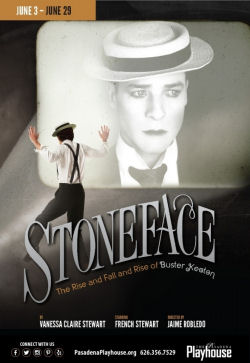
 Recently,
Recently, 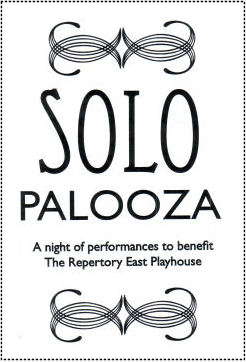
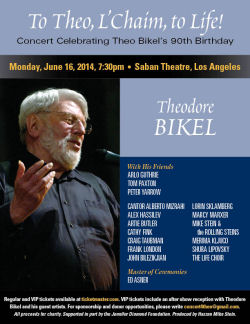
 If you haven’t figured it out by now, I like
If you haven’t figured it out by now, I like 
 If you’re old, like me, you remember the days when music from the theatre moved onto the pop charts. One song that was very popular in the 1960s was “Try to Remember”. You might recall the song: “Try to remember the kind of September / When life was slow and oh, so mellow. / Try to remember the kind of September / When grass was green and grain was yellow. / Try to remember the kind of September / When you were a tender and callow fellow. / Try to remember, and if you remember, / Then follow…”
If you’re old, like me, you remember the days when music from the theatre moved onto the pop charts. One song that was very popular in the 1960s was “Try to Remember”. You might recall the song: “Try to remember the kind of September / When life was slow and oh, so mellow. / Try to remember the kind of September / When grass was green and grain was yellow. / Try to remember the kind of September / When you were a tender and callow fellow. / Try to remember, and if you remember, / Then follow…”